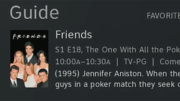I hate to say it, but local broadcasting is on the ropes. 2023 ended up being a negative year for local broadcasters for several reasons. Long channel blackouts on DIRECTV, DISH, and others impacted their revenue. ATSC 3.0 was dealt a big blow when LG decided to stop supporting it. And of course, the writers’ and actors’ strikes impacted network affiliates as the fall TV season more or less didn’t happen (unless you were a fan of reality TV and game shows.)
And now, it would seem that there’s a push among pay TV companies to make local channels optional. DISH already allows some subscribers to opt out of local channels. They’re able to do this because, unlike DIRECTV, they continue to offer an over-the-air antenna adapter for their products. DIRECTV is said to be pushing for the same sort of thing, allowing customers to opt out of locals in exchange for a drop in price.
Is this even legal?
Folks, I’m not a lawyer and broadcasting law can be extremely dense. But I’ll tell you all I can based on what I understand. There seem to be two laws in play here. The first, the Cable Act of 1992, changed the way that cable TV companies and local broadcasters interacted. In the 1980s, local channels had the right to demand that cable operators carry them, but they couldn’t profit in any way. Cable companies then developed the technology to replace channels on broadcast TV, and broadcasters retaliated. The Cable Act of 1992 allows broadcasters a choice. They can demand a cable company carry them, or they can give the cable company a choice but have the freedom to charge for carriage.
Obviously every broadcaster out there opted for choice number 2, and carriage fees rapidly surpassed commercial revenue as the biggest source of income for broadcasters. Losing these carriage fees at this point would be a huge problem, but as far as I can see it, it would be legal.
The satellite side of the fence
Satellite TV companies in this country are governed by a law called STAVRA. Its predecessor, a law called STELA, was created to allow satellite companies to offer locals in the first place. The FCC doesn’t allow broadcasters to send their signal beyond their local areas. Satellites in geosynchronous orbit, by definition, are outside the local area, right? Right. So this law carves out an exception by which broadcasters can send their channels up to the satellites, provided that satellite companies provide strict access control to keep those channels visible only in their home markets.
Along for the ride in these bills is the provision that satellite companies must negotiate for carriage and can’t just take it for free. So, if a contract isn’t reached with a broadcaster, the broadcaster has the right to demand a blackout. We’ve all seen these things before.
Locals on satellite could go away
I don’t think it would take an act of Congress to let DIRECTV and DISH ditch locals. The companies could offer local-free plans as long as they didn’t go against existing contracts. This could mean a gap of several years where channels disappeared one by one. That wouldn’t be very good for consumers, so I would expect that DIRECTV would allow opt-out locals only when all the contracts allowed it.
It’s worth pointing out that (as far as I know) cable companies would still be required to offer local channels unless the law that governed them was changed.
This would be a real mistake, the way I see it
Without support from satellite companies, local broadcasters might not be able to make it. Local broadcasting is incredibly important for giving high-quality news and weather coverage. Just because it’s possible for average people to record something and put it on Instagram doesn’t mean people will get honest reporting. It’s way too easy to distort people’s perception of an event. We need local broadcasting and reporters with integrity to help uncover the truth of the stories of our day.
Unfortunately, we’ve already seen that large broadcast groups have centralized their news coverage, and without enough income, more broadcasters will do this. It’s great that technology allows companies to produce all their newscasts in one location, but it means there isn’t enough “boots on the ground” coverage, and there aren’t enough local reporters digging for new stories.
In this generation, we’ve seen the almost total disappearance of small local newspapers, once the lifeblood of journalism. If we lose local television stations as well, it would definitely be to our detriment.
But will it happen?
I’m pretty sure that we won’t see local channels disappear in 2024. But it’s an equally fair bet that the overall health of broadcast companies won’t get any better, either. This kind of uncertainty could drive people away from locals. After all, network programming is available on streaming now. It’s all the local content that isn’t. There are streaming news channels available for many cities on Pluto, The Roku Channel, and other streaming apps. They’re generally limited to major cities and are produced in a central location away from most of those cities.
I know that local news can be dreary and boring sometimes. It’s actually good if you live in a place where not much happens. But there’s always something cooking, and generally if your local news seems boring, it’s not that there’s nothing happens. It’s more likely your local broadcasters don’t have enough money to investigate the problems. That problem is only going to get worse if cable and satellite companies allow more people to opt out of locals.
I do understand that it makes business sense for these companies to look into it. I also understand that your local channels are probably a third of your cable or satellite bill and it would be nice to get that money back if you don’t watch (or watch with an antenna.) But it’s a slippery slope that ends with no local coverage at all. When that happens, it’s pretty much impossible to bounce back.





